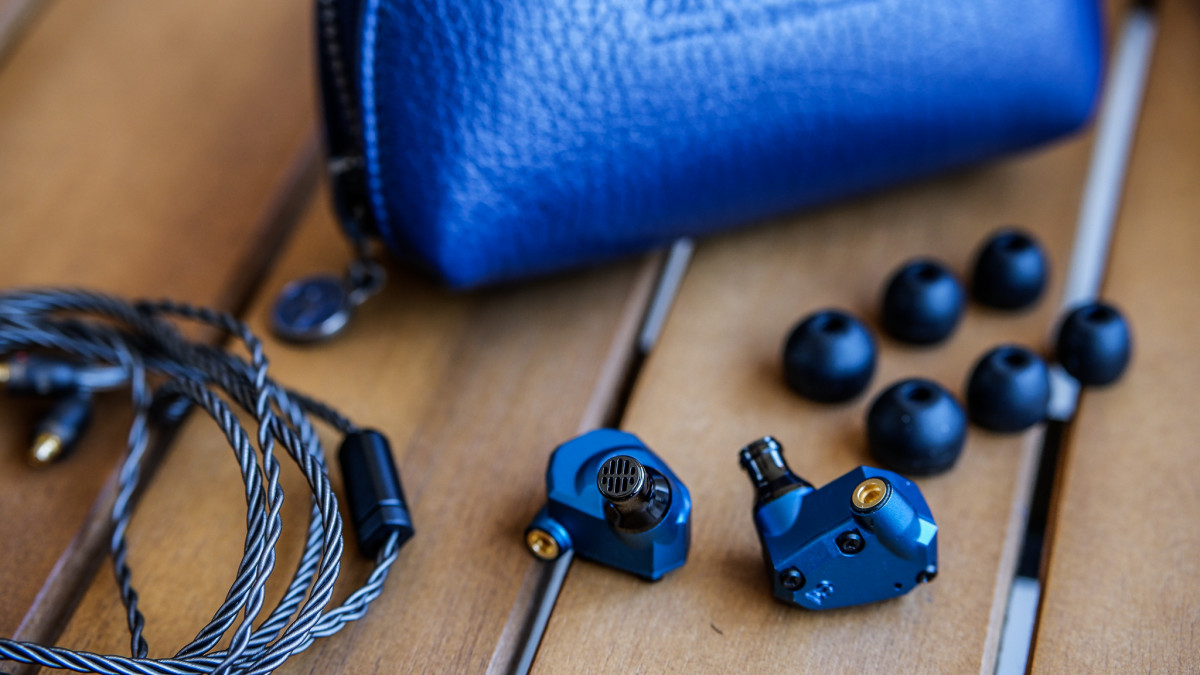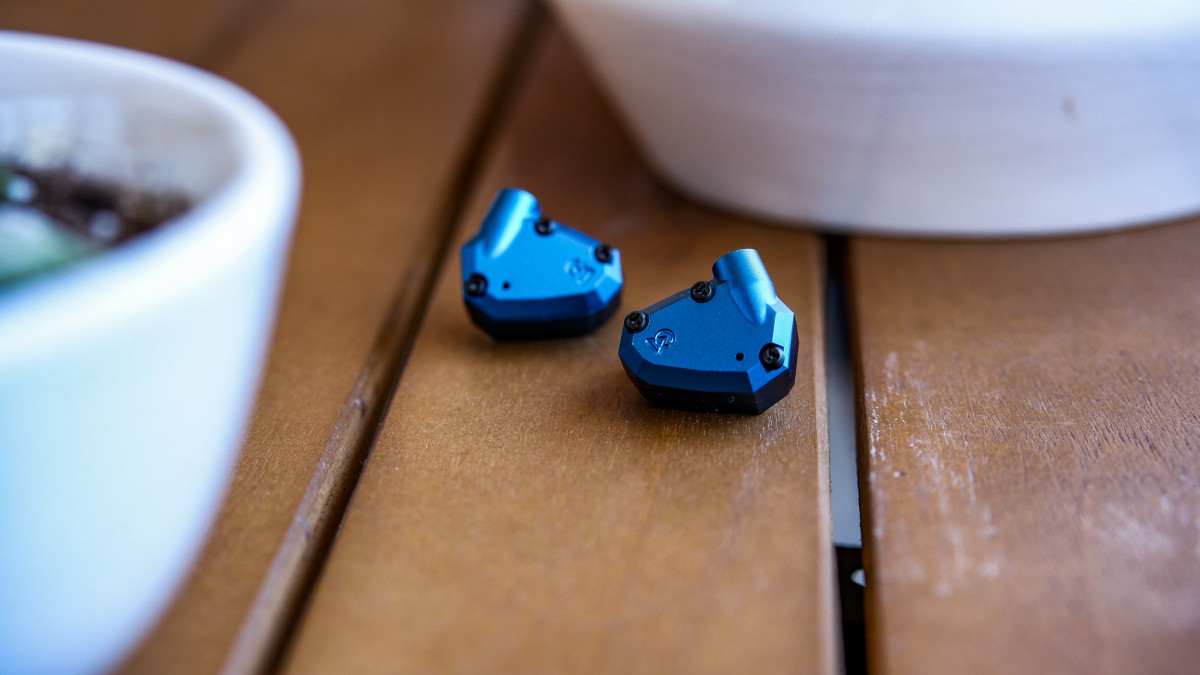Campfire Audio Polaris V2 Review

Written by Chrono
Introduction
The Polaris is a hybrid IEM that retailing at $499, serves as one of Campfire Audio’s mid-range offerings. In this review, I’ll be sharing my experience with the Polaris and drawing some comparisons to other similarly-priced IEMs to see how it stacks up in the current market.
Of note, the Polaris featured in this review is the Polaris V2, which is identifiable by its all-blue chassis.
Sources and Music Used in Listening Tests
All the listening for this review was done on the Astell & Kern SR25, and the Astell & Kern Kann Alpha. For the listening tests I used music from a wide variety of genres including Rock, Jazz, Classical, Acoustic, Hip-Hop, and latin. I played tracks from my own FLAC library, as well as from Qobuz and Tidal via Roon when using the Kann Alpha in DAC mode.
Accessories
Well, one thing’s for certain with the Polaris, and that is that you’ll have plenty of eartips to play around with and try out. Included with the Polaris are eleven sets of ear tips; five sets of final audio tips ranging from extra-small to extra-large, three sets of Campfire Audio “Marshmallow” Foam tips (S/M/L), and three sets of silicone tips (S/M/L).
Additionally, a leather case is included, and it’s finished in blue to match Polaris's color scheme. It’s fairly compact, though I wouldn’t say it’s particularly pocketable. Nonetheless, it’s a nice inclusion that’ll keep the IEMs safe and it also lends them a slightly more premium feel.
Lastly, there’s the stock Campfire Audio Smoky Jacket litz cable, which features a 3.5mm termination, and MMCX connectors on the headphone side. One comment I’d like to add is that in my time with the Polaris, the cable did tend to get tangled up very easily, even stored away neatly with the included velcro strips.

Build and Comfort
The Polaris’ build is impressive. Really Impressive.
Despite coming in at nearly a third of the price, the craftsmanship displayed on the Polaris matches that of the IE900. It’s assembled by hand in Oregon, featuring a machined aluminum chassis with a stainless steel sprout, a beryllium/copper insulated MMCX connector, and a “Cerulean Blue” Finish. Despite its rugged, all-metal build, though, it remains surprisingly lightweight.
Comfort, although good, wasn’t as impressive. I’d describe the Polaris as being a medium-sized IEM, as it’s noticeably larger than the IE900, but not quite as large as the Blessing 2 . However, where I struggled with the fit of the Polaris was actually in its shape and contouring. Its design features pretty hard-angled edges, and occasionally they would come in contact with my ear, causing some mild discomfort and prompting me to adjust the fit every now and then--worth keeping in mind if you’re sensitive to that type of stuff.
On the other hand, though, all the included tips were actually pretty great to use, and thanks to the variety of sizes included I doubt anybody will struggle to get a good fit with them. I think which set you use will depend on the kind of fit you prefer, and they all will have subtle differences in their tuning, and level of isolation.

Sound
As mentioned earlier, the Polaris is using hybrid design that blends Campfire Audio’s Tuned Acoustic Expansion Chamber and Polarity Tuned Chamber with a 9.2mm dynamic driver and a balanced armature driver.
First Impressions
I've never been one to shy away from warm headphones like the HD 650, LCD-2, or Blessing 2; in fact, I love them! However, I personally think that the Polaris is a headphone that veers a bit into the wrong side of warmth and is unbalanced. It’s an extremely warm headphone that lacks some presence in the midrange, yet at the same time, its treble is pronounced in a rather odd manner that makes for a somewhat confused listen as a whole.
Bass
The bass is undoubtedly what is most pronounced about the Polaris’ frequency response. It’s got an extreme bass shelf that is several decibels over what I’d consider to be “neutral.” Now, of course we all have different preferences for the level of bass we want from our headphones, and I’ll admit that sometimes, with certain tracks that really pronounced bass can be a lot of fun.
However, unlike other headphones with a heavily emphasized lower bass response like the IE300, the bass elevation on the Polaris doesn’t settle at around 150-180Hz. Instead, the Polaris’ bass shelf just keeps going all the way to around 400hz, which results in a lot of upper bass bleed, and makes for a slightly muddy bass to midrange transition. As a whole, it’s a bass response that feels lacking in restraint, and unfortunately it does tend to overshadow the other registers of the frequency response.
Mids
Due to bass elevation that bleeds into the lower mids, and a relatively recessed upper midrange, the Polaris’ midrange feels as though it lacks definition and contouring. Its focus is definitely shifted towards the lower midrange, of which elevation makes for bloated fundamental tones that come through with a congested quality to them. Additionally, since the presence region between 2K-5K doesn’t have much energy, it’s unable to compensate for the boosted lower mids, which results in a stuffy midrange presentation. This is a midrange tuning that to me didn’t feel organic, and to some extent it felt as though it took some of the vibrance and bite out of vocals and instruments.
Highs
Despite being an IEM that is very warm overall, the treble range on the Polaris is surprisingly still prominent, though fairly uneven. Whilst the treble level is low, the Polaris does seem to have two emphasized frequency bands, with 6K and 8K having distinct peaks.
The first and more prominent peak was the one at 6K, which sounded to me as though it was boosted by 5-6dB, which could add a stress to consonant sounds and particularly to snare drums. Then, the 8K peak was not as noticeable, but it did add a bit of a shimmer up top that didn’t sound very natural. I wouldn’t say that either of these elevations were harsh, but combined they did prove to become fatiguing or at the very least distracting over time.
Resolution
For internal resolution I think that the Polaris delivers performance that is not quite on par, but similar to that of the Dunu SA6 . Vocal and instrument lines are fairly detailed, and feel adequately textured. However, the bloated bass to midrange transition and the glare produced by the 6K peak keep the image of the music from achieving the clarity that it could.
Soundstage, Imaging, and Layering
The soundstage on the Polaris is not quite as spacious as what I’ve experienced from the Dunu SA6, or from the Sennheiser IEMs I’ve tried, but it does have a presentation that feels a fair bit more spacious than that of the Blessing 2. In large part this is due to its clean imaging, as well as its ability to distinguish instrument lines in busy musical passages.
Dynamics
Dynamics is the category where I found the Polaris to perform the best, and in fact it’s one of the best IEMs I’ve heard in this regard. The dynamic drive used in the Polaris is very punchy, with a very satisfying impact in the low end. However, it’s not just bass tones that benefit from this, as the upper registers also have a very engaging and lively tactility, with a weighty snap and attack that gives instruments a more believable presence--it makes for a very energetic listen.

Conclusion
The Polaris has an outstanding build, and it actually delivers technical performance that is pretty good. That being said, though, the poorly balanced tuning really overshadows its positive qualities and makes it tough to recommend. For my money and considering the current options available, I would personally stretch the fifty additional dollars and reach for the Dunu SA6 as I do think that it is more well-rounded. However, if we get to see a Polaris V3 in the near future, it would be really interesting to see if Campfire Audio can reign in this hybrid design and deliver both the tonality and technical performance that would make this a true contender in the $500 price range.
-Chrono
Watch the video review here:
---
Discuss the Campfire Polaris V2 on the HEADPHONE Community Forum.
---
